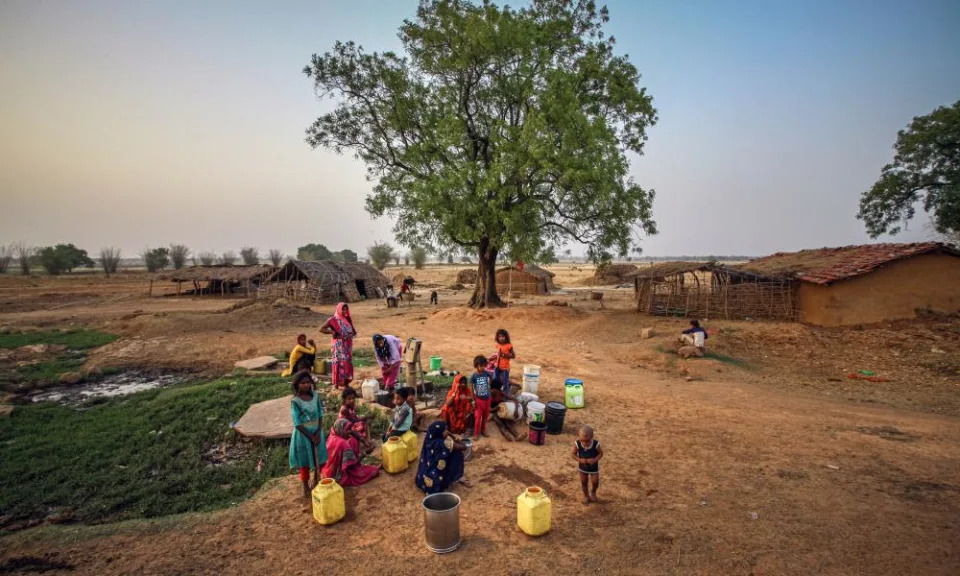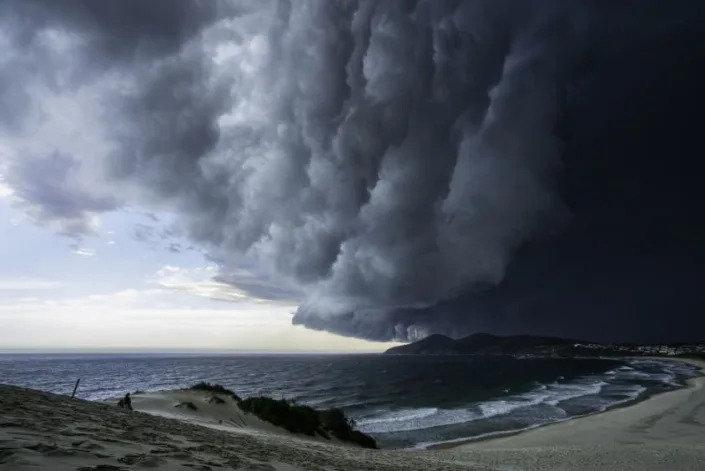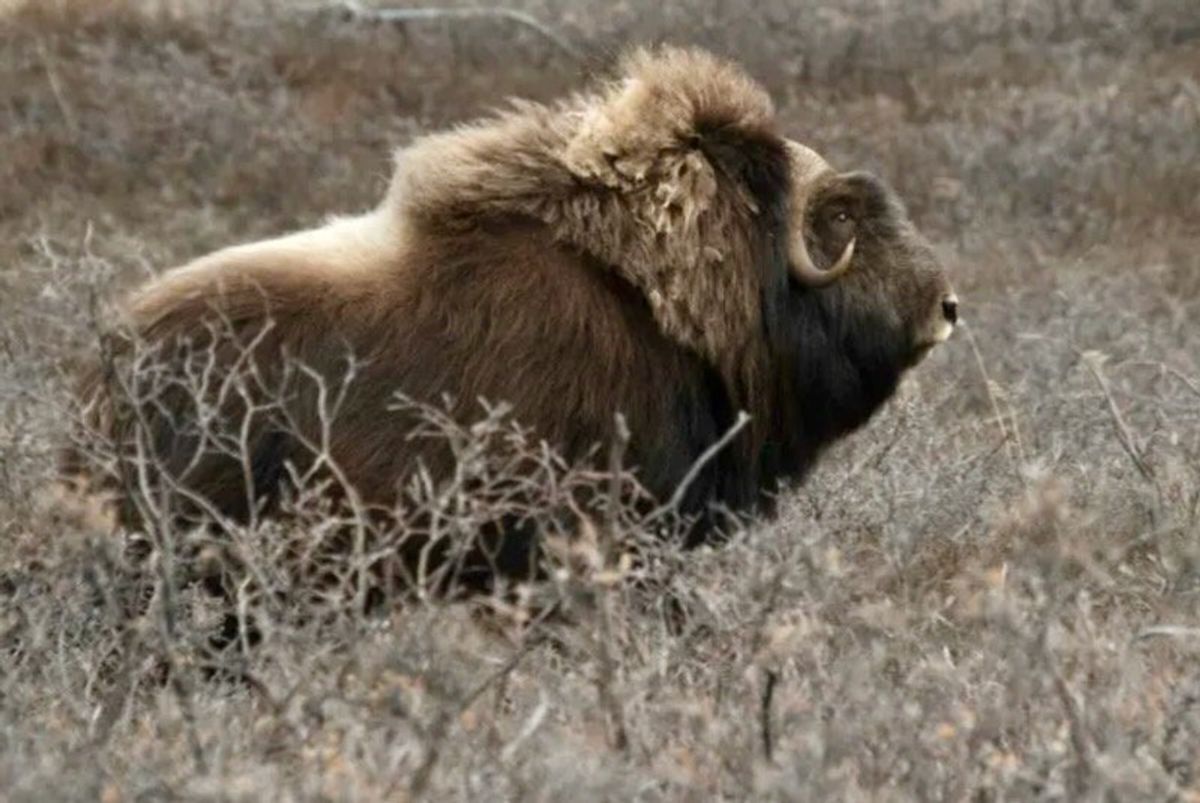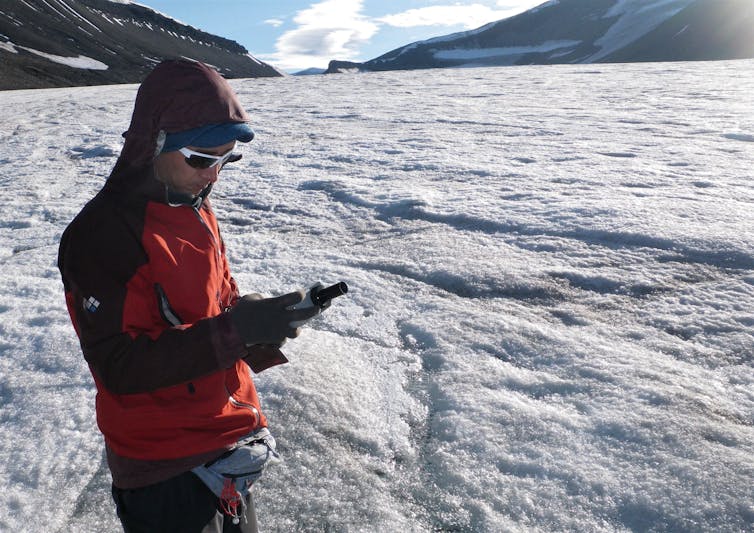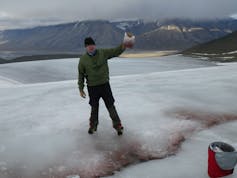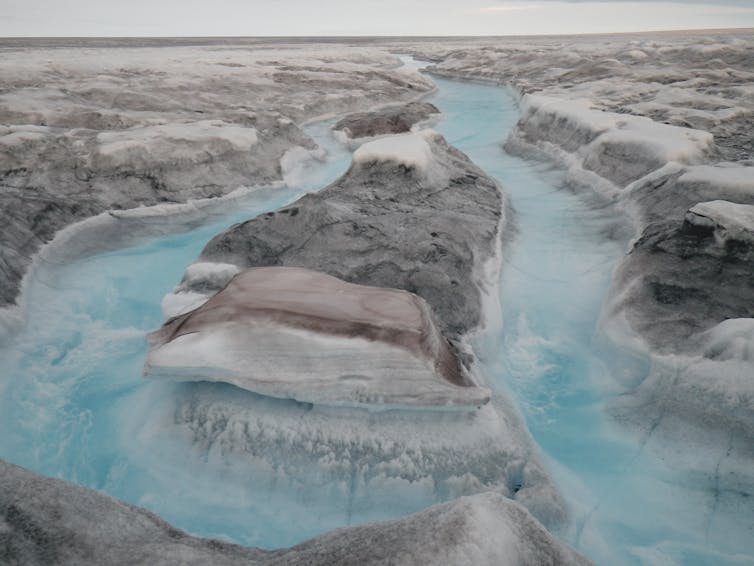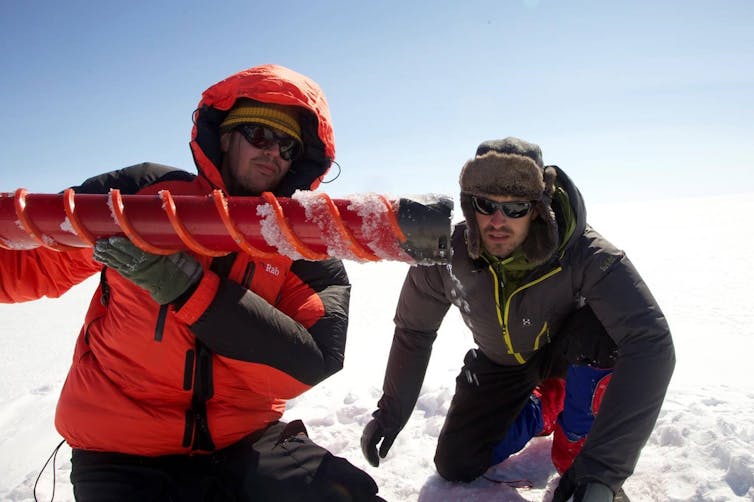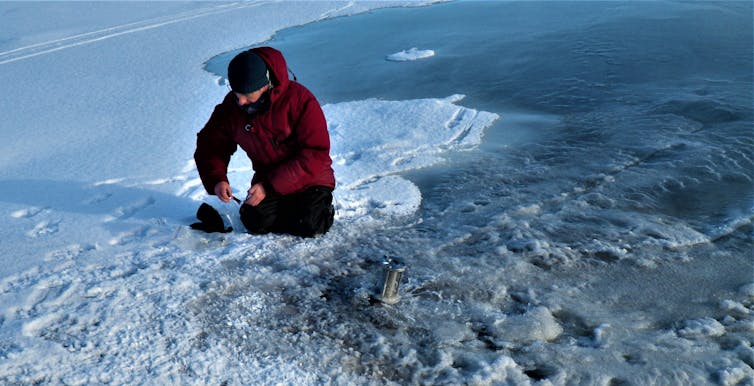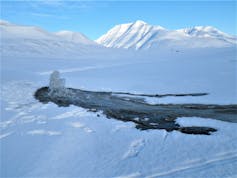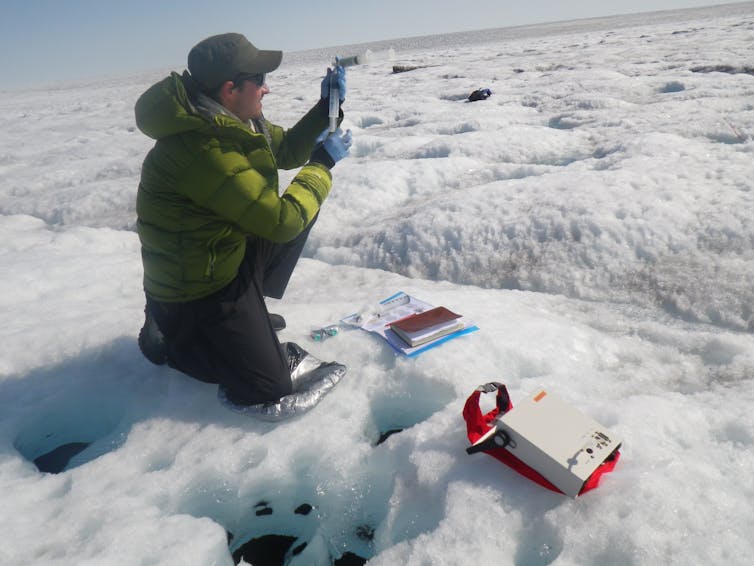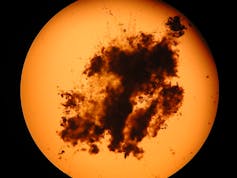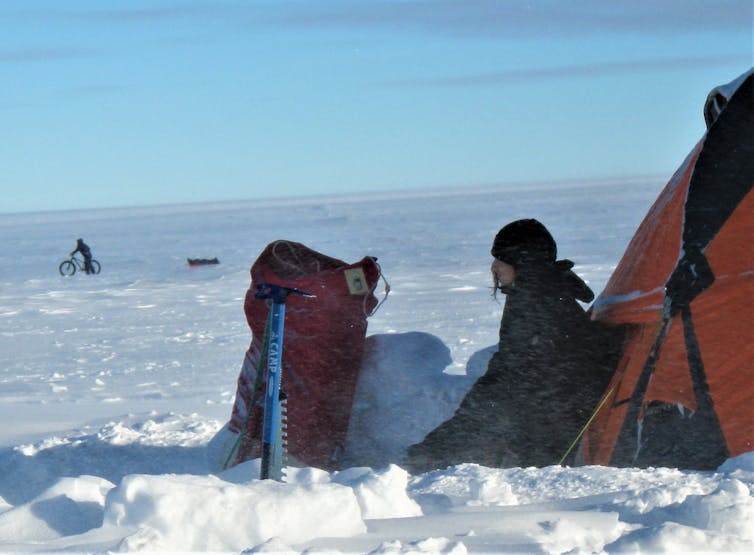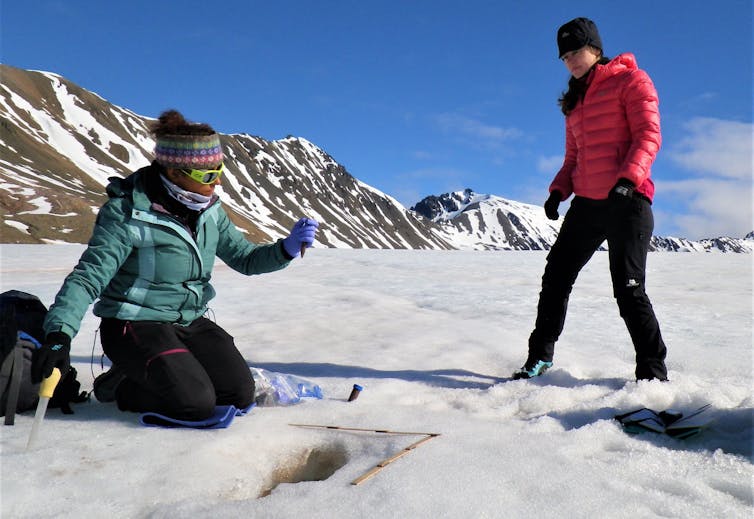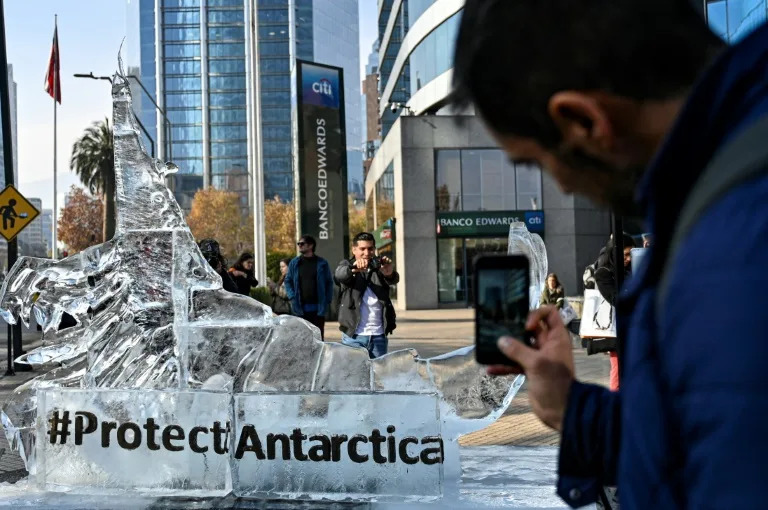‘One day it will just go off’: are Naples’ volcanic craters about to blow?
Angela Giuffrida in Pozzuoli
Sat, 24 June 2023

Visitors to Francesco Cammarota’s home have envied the views from his balcony.
To the right is the Gulf of Pozzuoli, where the Mediterranean Sea laps the distant islands of Procida and Ischia. Directly in front is Solfatara, a shallow volcanic crater whose sulphurous vapours are known for their therapeutic benefits.
But for Cammarota, who has lived in the apartment for more than 30 years, the view is a constant reminder of the menace bubbling beneath the surface.
Solfatara is located in Campi Flegrei, a constellation of ancient volcanic craters near the southern Italian city of Naples, parts of which were described in a study this month as edging towards “breaking point”.
The sprawling volcanic area, home to at least 360,000 people across the seven most at-risk inhabited hubs, is not as well known as nearby Mount Vesuvius, whose eruption in AD79 wiped out the Roman cities of Pompeii and Herculaneum.
Part of the reason is because you can’t see it: instead of resembling a characteristic cone-shaped volcano, Campi Flegrei, which can be translated as “burning fields”, is a seven-mile-long caldera, or depression, formed 39,000 years ago after an eruption emptied it of magma. Subsequent eruptions – the last in 1538 – created a series of small hills and craters.
But looks can be deceiving. Campi Flegrei is much more active than Vesuvius, and is among the most dangerous volcanoes in Europe. Thousands of small earthquakes since the 1950s, the frequency of which have intensified over the past year, have weakened the caldera as the pressure beneath it builds, ripening the conditions for a rupture, according to the study jointly produced by academics at Italy’s National Institute of Geophysics and Volcanology (INGV) and University College London (UCL).
Cammarota is more than familiar with the tremors – one on Wednesday, which had a magnitude of 1.6, he keenly felt.
“Some days there are more than one,” he says while looking out towards the Solfatara crater. “It’s frightening, especially at night. One day it will just go off.”
The crater – closed off to the public since 2017 when an 11-year-old boy and his parents died after slipping into it – sits in the middle of a hamlet made up of a cluster of homes and handful of shops that forms part of Pozzuoli. This densely populated port city is among the seven inhabited areas, including part of Naples, classified by Italy’s civil protection authority as being in the “red zone”, where the risk of eruption is highest.
Cammarota lives with his daughter, Arianna, who feels so anxious about the volcano that she doesn’t want to talk about it. His son, Antonio, says he wishes he lived somewhere else.
Other residents have an almost fatalistic approach. “We’re used to it,” says Natalia Esposito, who works in the delicatessen.
An evacuation plan exists, under which people would be moved out within three days, either by their own transport or buses, trains and boats. The risk level – green, yellow, orange and red – is regularly reviewed. Pozzuoli is currently on yellow alert.
The situation of the Campi Flegrei, including activity under the sea, is monitored at INGV’s nearby Vesuvius Observatory, established after the last time Pozzuoli was evacuated in 1983.
Since the eruption in 1538, the whole area has been gently sinking as the rising magma pushes the ground above it up. Pozzuoli has been lifted by almost 4 metres since the 1950s.
Mauro Antonio Di Vito, the observatory’s director, says the volcano has been in a state of “unrest” for 11 years.
In the past four days, about 30 quakes have been registered.
“The volcano is characterised by seismic activity and the lifting of the ground,” he says. “It is obvious that with 600 quakes a month, you will get 600 ruptures, which weakens the structure of the volcano. But to have an eruption, you need another fundamental element – magma – and this is deep.”
The recent study, published in Nature’s Communications Earth & Environment journal, found the tremors and ground uplift are cumulative, meaning that volcanic activity does not need to intensify for an eruption to become more likely.
“If the uplift continues as it has been continuing, the consequence will be that the crust will eventually have to break somewhere, because it can’t stretch forever,” says Christopher Kilburn, a professor from UCL who led the research.
While the volcano might be approaching a rupture, he cautions that this does not mean an eruption will occur. Kilburn, who is currently in Pozzuoli, adds: “If you look from the sea towards the land, there are small hills here and there – those are the sites of eruptions. Should there be an eruption in the near future, we’re expecting it to be of the size that would create one of those hills. We’re not expecting it to be of the size that created the original caldera.”
Di Vito says the high risk is mostly owing to the density of the population, along with the challenges of evacuating residents through narrow, traffic-clogged streets. Pozzuoli’s population grew, especially in the 1980s, as people moved from Naples for the cheaper homes. However, many homes have been poorly built, and would not withstand significant seismic activity.
“These areas have been urbanised without considering the fragility,” says Di Vito, adding that there are financial incentives available for residents to adapt their homes. “Buildings need to be better structured and we need a cultural change to really encourage people to do this.”
Evacuation simulations are a regular occurrence, although Cammarota remembers the real one in 1983. “Then nothing happened and we returned home,” he says. “If there’s another alert then I will just get in my car and go. What else can we do?”

